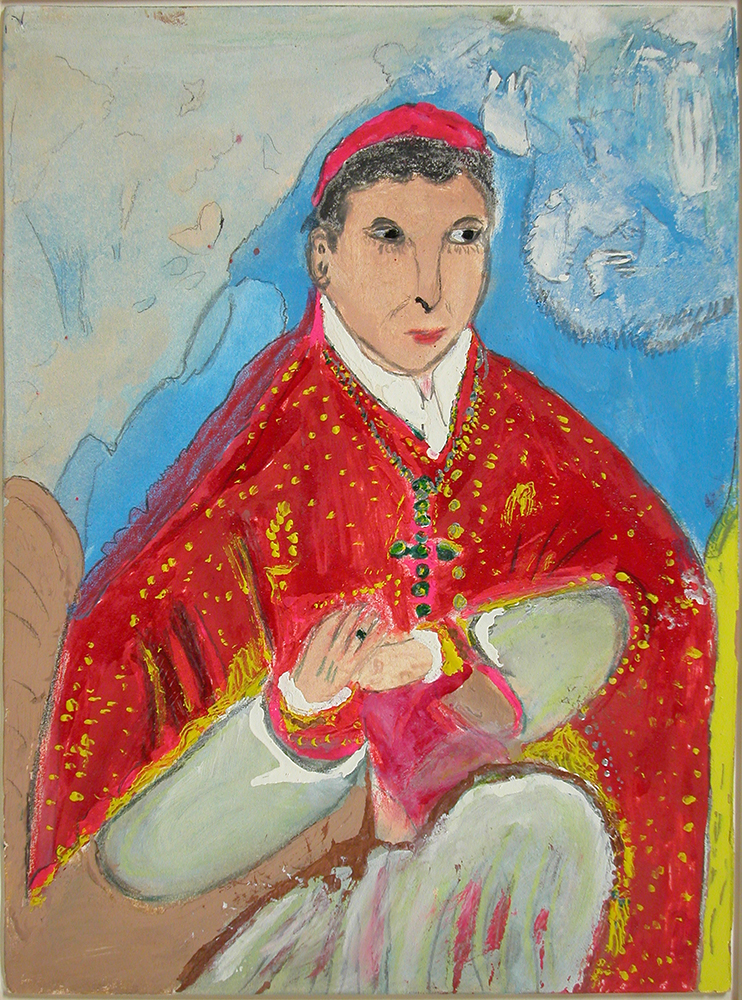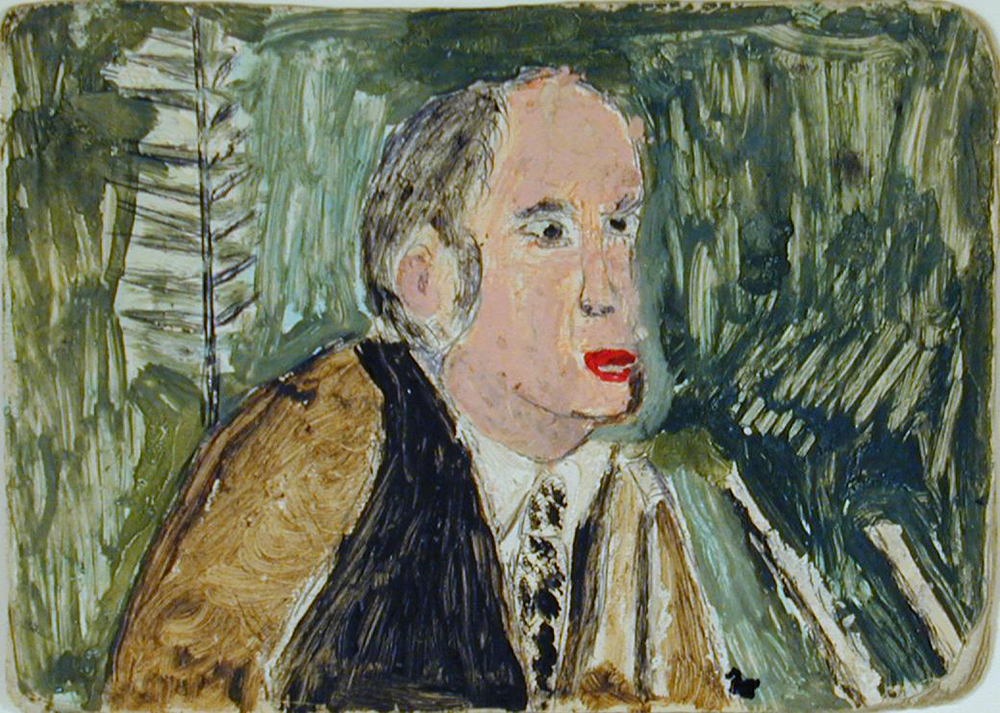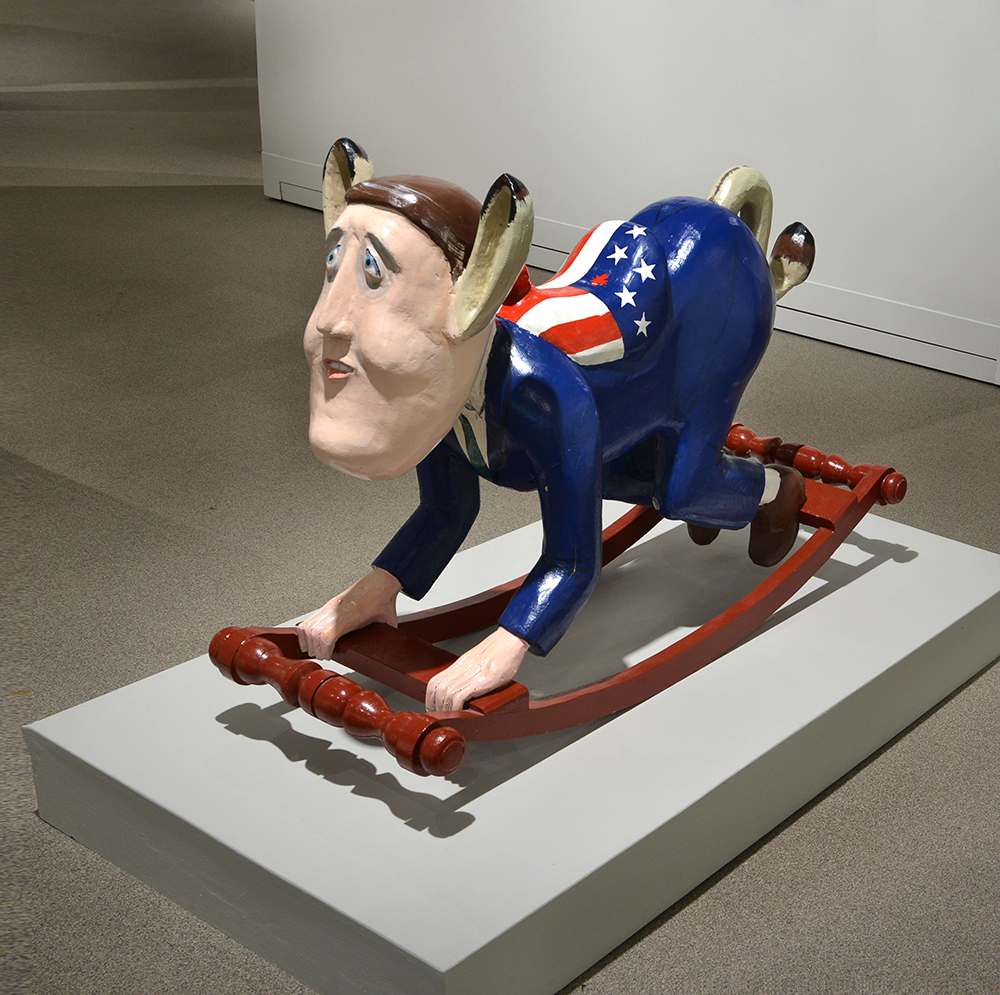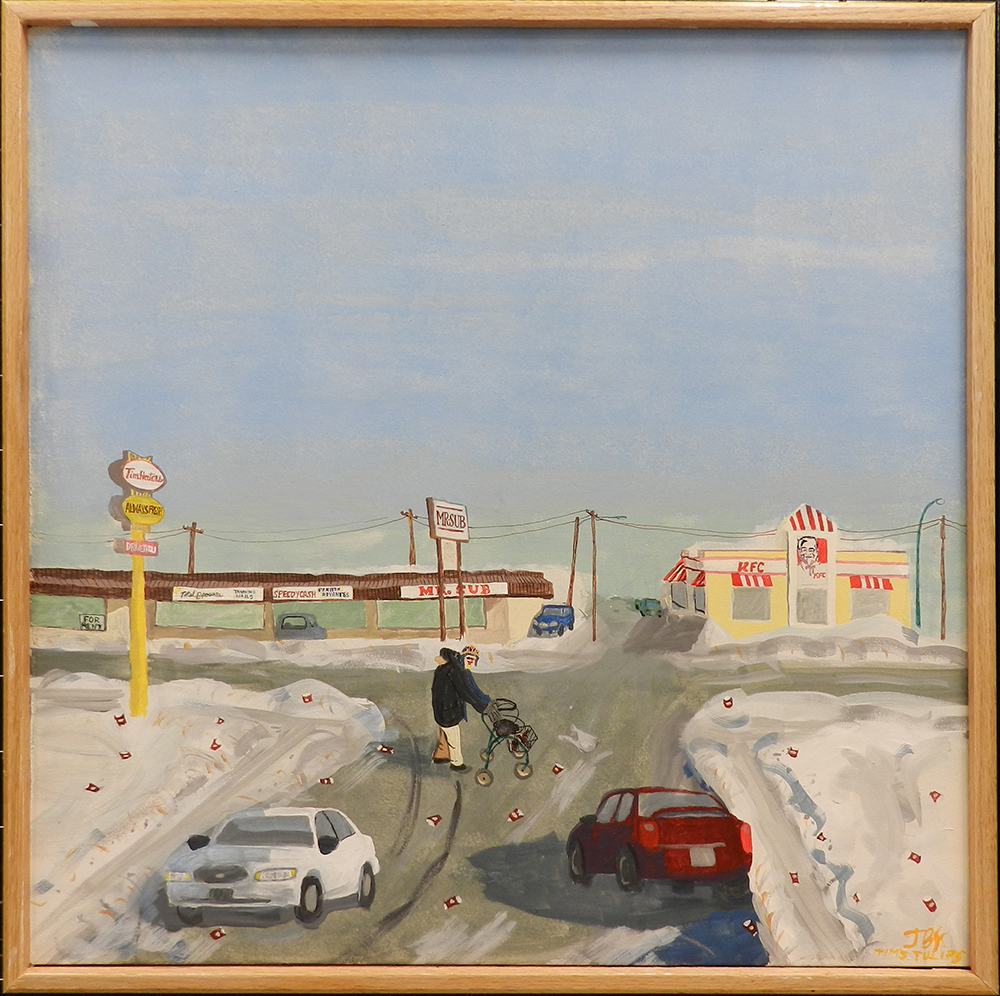Religion and Politics
It has often been held that certain topics should not be discussed in public or with acquaintances. That there is a risk of creating controversy. Among these topics are religion and politics. These ideas are, at the same time, often important to people’s lives and identities. They are subjects people are expected to be informed on, and on which most people have opinions. This of course includes artists, and vernacular artists are often quite willing to comment on these subjects.
Religion as an influence or subject in vernacular art appears in numerous ways. It can appear as traditional techniques, aesthetics, and iconography. It can be the subject of praise or criticism, and it can be the focus of memories both joyous and traumatic. Many cultural traditions are preserved or transmitted through and around religion. The matter of conflict between these systems of belief can itself be a topic. Artists observe and understand these religious contexts. They include them in their worldview and visual language.
One such artist was Dmytro Stryjek. Born in Ukraine in 1899, he immigrated to Hafford, SK and worked for Canadian National Railway for 38 years. He then moved to Saskatoon upon retirement. There he finally had time to paint, and a community of people that accepted him and his work. Stryjek had some limited formal training not in ‘art’, but military intelligence portraiture. Viewers loved his eye for colour and composition. He painted using various found materials. Several of his paintings were portraits of religious and political figures with ornately-decorated gold edges, like Ukrainian Orthodox icons. All treated with similar reverence.
Politics and art are similarly intertwined. The politics of the time can be both the context of creation of the work, and can itself be the subject. Whether by the artist’s direct comment, or more subtly. Through biting wit or dire warning, or through what is included or excluded, or how things are framed. A reverent portrait of a politician (or caricature of the same), or images that provoke the viewer’s thought on the topic. Political subjects are explored in depth using art as a language.
Moose Jaw artist Jerry B. Kaiser took interest in art after taking a woodworking class in 1973 and running out of room for furniture. He is known for witty political sculpture and painting. His sculpture, Rockin’ Mulroney, is one of a series of Conservative politicians as rocking horse creatures. It renders then-Prime Minister Brian Mulroney as a caricatured donkey rocking horse. A playfully satirical take in toy form.
His painting Tim’s Tulip wryly comments on consumer waste and environmental responsibility in contemporary Moose Jaw. It shows the annual emergence of littered Tim Horton’s cups poking out through the spring snow melt.
Many vernacular artists face stereotypes of being isolated from the larger world. However, the amount of external reference and insight in their work demonstrates that this is not the case. That even artists without formal training are perfectly capable of observing the world around them and making comment.
See Bibliography for sources.





